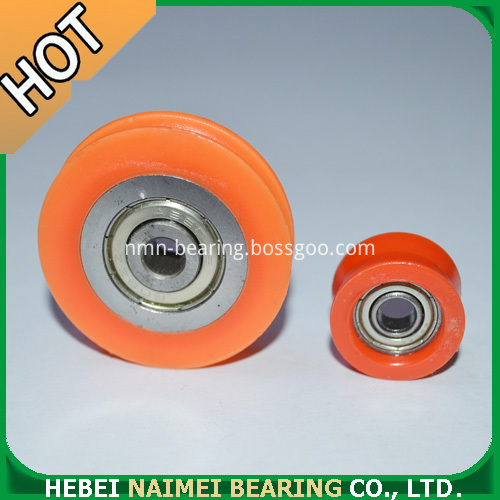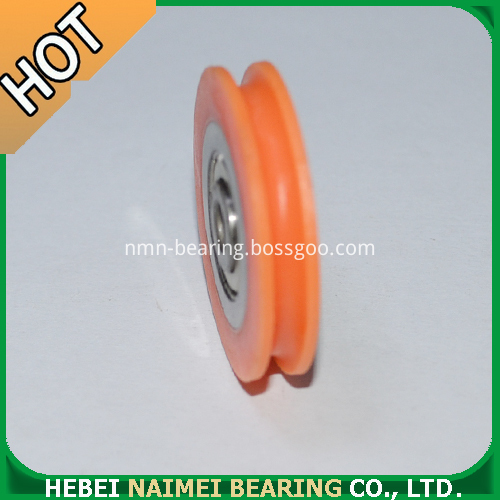Because the compressor will generate a large unbalanced inertial force, that is, the disturbance force, the unbalanced inertial force will cause the vibration of the foundation and the foundation. The excessive foundation and foundation vibration will have a series of adverse effects, such as lowering the foundation. The strength of the soil, increasing the settlement of the foundation, causing the cracking and destruction of the building (structure), affecting the health and labor productivity of the workers, affecting the normal work of the machine, and even causing damage or shutdown of the compressor, the loss is far more than Basic investment. Therefore, the correct and rational basic design is the first place in the overall design. 1 Compressor classification compressors have different mechanisms due to their disturbance forces and are usually divided into two categories: 1) piston compressors. The disturbance force is mainly based on the mass inertial force generated by the reciprocating motion, and can be divided into one harmonic and two harmonics (higher harmonics can be ignored), and the frequency is twice and twice the spindle speed respectively. This machine is characterized by easy starting, stable performance, low running cost, but poor balance, large amplitude, and low resonance, which may cause resonance of nearby buildings and some of its components. 2) Turbo compressor. The disturbance is caused by the mass imbalance of the rotating part, only one harmonic, the frequency is the same as the spindle speed. This machine is characterized by high operating frequency, good balance performance and small amplitude, but the operating cost is relatively high. 2 Compressor basic structure type The basic types of compressor foundation are mainly bulk type, wall type and frame type. 1) Large-scale foundation: It is the most widely used, and its characteristic is that the foundation itself has high rigidity. When the power is calculated, the deformation of the foundation itself can be ignored, and the vibration calculation is performed according to the rigid body on the foundation. 2) Wall foundation: consists of longitudinal and transverse walls that bear the weight. The grooves and holes necessary to install and operate the machine are reserved in both of the above bases. 3) Frame foundation: generally only used for medium and high frequency turbo compressors with good balance. The upper structure is composed of a column fixed on a continuous floor or a reliable bedrock and a longitudinal and transverse beam rigidly connected at the upper end of the column. The elastic system can be calculated according to the frame structure. 3 compressor basic design steps 1) collection of design information: a. machine model, specifications, power, speed, transmission, center of gravity, contour size, base size. b. The self-weight, action point and fixing method of the auxiliary equipment of the compressor unit and the main pipeline. c. Size and location of reserved grooves, holes, anchor bolts and embedded parts associated with the equipment. d. The base plane location and the base map of the adjacent building. e. Engineering geological survey data of the construction site and test data of foundation dynamic characteristics. f. Disturbance and disturbance torque of the machine, direction of action, and point of action. 2) Based on the above information, the basic dimensions and basic structural forms are initially selected. 3) According to the basic design specifications of the power machine, the basic vibration allowable limit is reasonably selected. 4) Check the bearing capacity and settlement deformation of the foundation according to the strength of the foundation and the gravity of the unit (compressor base and basic machinery, auxiliary equipment, and fill). 5) According to the initially selected basic size, the total centroid position of the computer group, and the basic size is adjusted reasonably, so that the total centroid position of the unit and the base bottom of the foundation are on the same vertical line. 6) Static calculation of wall foundation and frame foundation: The equivalent load calculated by static load and dynamic load on the foundation is used as the design load, and the foundation strength and reinforcement calculation are carried out according to the current reinforced concrete code. 7) Dynamic calculation: According to the disturbance property of the machine, the corresponding dynamic calculation formula is used to calculate the basic vibration line displacement, vibration speed or root mean square speed so as not to exceed the vibration allowable limit. 8) Draw the construction drawing based on the above calculation results and the structural requirements of the relevant specifications. 4 Problems that should be paid attention to in the basic design of the compressor 1) Reasonable choice of basic form: For the piston compressor, the bulk or wall foundation should be used, and the high-speed turbine compressor should adopt the frame foundation. As far as possible, the natural frequency of the base set is shifted by more than 30% from the frequency of the disturbance of the machine to avoid resonance. 2) For the large block or wall foundation, the dynamic parameters of the foundation should be reasonably selected (the compressive stiffness coefficient of the foundation, the damping ratio, the vibration quality, etc.). It is worth noting that the value of the foundation stiffness coefficient is not as small as it is safer. The natural frequency of the unit is higher than the frequency of the machine's disturbance, that is, the basis of the unit's work before resonance. The foundation stiffness coefficient is small, it is safe, but when the natural frequency of the unit cannot exceed the frequency of the machine, the unit is When working after resonance, it is not safe to take the foundation stiffness down. In addition, at this time, it is necessary to fully consider the improvement effect of the foundation depth on the stiffness and damping ratio of the foundation. 3) The compressor base should be placed on a uniform low- and medium-compressed soil layer. In case of weak foundation, collapsible loess, expansive soil or ditch, pit, grave, and cave, appropriate measures should be taken and treated with caution. Saturated fine sand that is prone to vibration and liquefaction within the pressure layer of the foundation, loose sand and artificial fill that may cause severe vibration. It is not suitable for natural foundation. Pile foundation or other reasonable, economical and effective foundation should be adopted. Reinforce the solution to avoid harmful settling of the foundation. 4) Reasonably select the basic geometry: a. For large blocks or wall foundations, the base height should be lowered under possible conditions to reduce the disturbance torque due to the horizontal disturbance of the machine. b. For machines with a speed of not more than 800 r/min, the natural frequency of the unit should be increased in the design so that the natural frequency of the unit is higher than the disturbance frequency of the machine, so that the unit can work before resonance. This can be achieved by using a method of increasing the substrate area, reducing the depth of the foundation, using a joint foundation, or increasing the stiffness of the foundation. c. For machines with a speed greater than 800 r/min, it is easy to resonate with the unit. The ground stiffness coefficient should be reasonably selected in the design to make the self-frequency calculation of the unit as accurate as possible to correctly guide the frequency modulation direction. When the natural frequency of the unit used in the design is lower than the disturbance frequency of the machine, that is, when the unit is working after resonance, the machine must pass through the resonance zone during the start and stop operation. In order to avoid the transient excessive vibration, it can be reasonable. Adjust the base depth and base area to increase the damping ratio of the unit. d. For the frame foundation, the rigidity of the bottom plate is required to be large, and the self-weight of the lower half of the foundation (including the self-weight of the column, the weight of the bottom plate, the auxiliary equipment on the bottom plate and the weight of the filling material, etc.) is greater than the self-weight of the upper half of the foundation (including the self-weight of the column). Half, the weight of the top plate, the weight of the machine installed on the top plate, etc.). e. The vertical disturbance of the machine, the stress is to pass through the center of mass of the unit and the bottom of the foundation; the horizontal disturbance of the machine is to pass through the plane of the center of mass of the unit to avoid the turning or torsion moment. f. The total center of gravity of the unit and the base shape of the foundation should be on the same vertical line. If the eccentricity is unavoidable, the eccentricity should not exceed 3% of the length of the bottom of the corresponding direction. 5) When designing the compressor foundation, it is advisable to set frequency adjustment measures, such as reserving steel bars at appropriate positions, so that excessive vibration occurs during the test run of the machine. 6) The compressor foundation is generally separated from the foundation, superstructure and concrete floor of the building. However, the foundation of the piston compressor can increase the rigidity of the foundation and reduce the vibration of the foundation due to the embedded effect of the floor on the foundation, so there is no seam between the foundation and the floor. 5 Conclusion The design and construction of the compressor foundation is a complex subject in the construction project. In addition to the civil engineering professional design should be based on the basic frequency modulation, reinforcement of the foundation and other measures, it must also be integrated from the general layout, process layout and construction. Consider and strictly control to meet the design requirements of advanced technology, economical rationality, safety and application, and quality assurance.
U Groove Plastic Rolle(u groove bearings) : Hebei Naimei Bearing Co., Ltd. is a specialized manufacturer of plastic roller for about 20 years. is
used widely in high quality Sliding and Hanging door and window
wheel/rollers, Sliding and Hanging furniture wheel/rollers, Sliding and
Hanging shower wheel/rollers, decorating hardware
accessories rollers
We can manufacture the Non Standard Bearing Rollers according to the customer's requirements.
U Groove Plastic Roller,Nylon Pulley Wheel,U Groove Wheel,U Groove Track Bearing Hebei Naimei Bearing Co., Ltd. , http://www.nmn-bearing.com


Compressor components and precautions